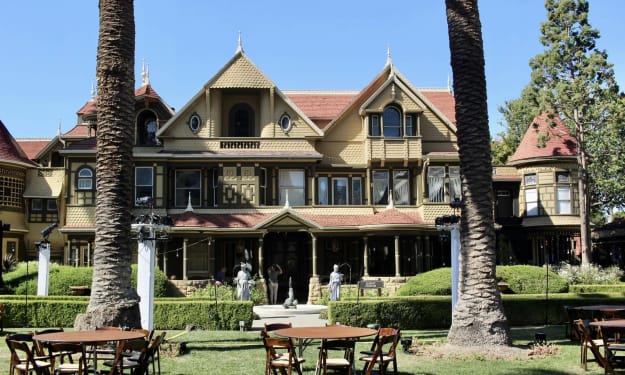Will disabled people ever get the stories they deserve?
In all the conversations about diversity in the entertainment industry, the silence around disability is deafening. But could things finally be changing

Diversity has become a buzzword in the entertainment industries – and if there’s still debate about how much things are really changing, or if moves towards greater representation are too often mere lip service or box ticking, the diversity conversation is at least being had. Do badly, and it will get called out. And there genuinely do seem to be signs of change, whether that’s British theatre embracing gender-fluid casting, or Hollywood learning the lessons of Black Panther and Crazy Rich Asians, that ethnically diverse casting and storytelling can help the industry reach new audiences – and net new profits.
Why, then, is one minority group still often ignored? When it comes to representation of people with disabilities, film, TV and theatre still fall depressingly short – despite approximately 15% of the world’s population experiencing disability.
It’s still common for able-bodied A-listers to play disabled characters – in recent years, Bryan Cranston in The Upside, Sam Claflin in Me Before You, and Eddie Redmayne in The Theory of Everything have all been accused of “cripping up”. And if, admittedly, such casting decisions do now consistently prompt criticism, it’s a practice still more widely accepted than, say, casting a white actor in a non-white part.
“It feels like doors are very slowly opening to diversity in general but disability is excluded from that,” says prolific playwright and screenwriter Jack Thorne, known for Harry Potter and the Cursed Child and the new TV adaptation of His Dark Materials, among other things.
Thorne has an invisible disability, cholinergic urticaria, a severe allergy to heat – and throughout his career, he’s tried to ensure that disabled actors are front and centre in his work.
You get push back on casting disabled actors a lot so it’s best to be very upfront with your ambitions – Jack Thorne
Take a look at his latest TV work, for example: His Dark Materials features Mat Fraser as a Gyptian, who just happens to have phocomelia, while his recent Channel 4 drama The Accident included Ruth Madeley as a lawyer, who just happened to use a wheelchair, and Genevieve Barr as a grieving wife, who just happened to be deaf.
Meanwhile Thorne’s stage version of A Christmas Carol, which returns to the Old Vic in London this Christmas for the third year running, and has just opened on Broadway, specified that young, disabled actors must play Tiny Tim. One alumnus of the role, Lenny Rush, has now gone on to star in a new TV version of the Dickens classic, written by Peaky Blinders creator Steven Knight, and airing this Christmas.
Is the industry becoming more accepting?
But in general, are things improving for disabled actors, and representation – or getting worse? “They’re certainly not getting better,” Thorne insists, damningly. “Personally, I had a better time 10 years ago with it.” He points to the disabled actors he was able to cast in early projects of his such as Skins, Cast Offs, and The Fades. “I still have the same casting conversations I always had, and it depends on the production as to whether I’m listened to.”
Thorne wrote the parts played by Barr and Madeley with those actors in mind, and he pushed for Fraser to be seen – but there can still be resistance to casting actors with disabilities. “You get push back a lot so it’s best to be very upfront with your casting ambitions,” acknowledges Thorne. “That said, there are also lots of supporters you do meet in the industry so it’s not all a lonely march.”
This year, Ali Stroker became the first wheelchair user to win a Tony for her performance in Oklahoma! on Broadway
And there are some encouraging signs: the conscious decision to cast a deaf actress, Millicent Simmonds, in a key lead role in last year’s hit horror film A Quiet Place was much-lauded. Madeley also starred in the major BBC/HBO drama series Years and Years, in a part that was not specifically written as disabled. But high-profile shows and leading film roles are still woefully rare.
In theatre, the issue does seem to be more to the fore. This year, Ali Stroker became the first wheelchair user to win a Tony for her performance in Oklahoma! on Broadway. And, even if there’s a way to go yet, there are real signs of change – in British theatre, particularly. Production company Graeae, who work with disabled artists, have long been leading the way, and have partnered with six theatres around England for the visionary Ramps on the Moon project, a six-year commitment to making integrated and inclusive work with mainstream appeal.

Major institutions like the Royal Shakespeare Company (RSC) and the Globe have also made public commitments to casting disabled and D/deaf actors. In January, Cost of Living, Martyna Majok’s Pulitzer-prize winning play, featuring characters with quadriplegia and cerebral palsy, cast disabled actors in the relevant roles. Then in the summer, Jellyfish, staring Sarah Gordy, who has Down’s syndrome, in the lead role, was seen at the National Theatre, after transferring from west London’s Bush Theatre.
And there are more high-profile disability-inclusive productions incoming. Midnight Movie, Eve Leigh’s play exploring chronic pain, opens at the Royal Court this week. Starring deaf actress Nadia Nadarajah, every performance has British Sign Language, captioning and audio description woven in. And, in a genuinely pioneering move, Leigh has even developed a digital version for people unable to physically attend – they can sign up to receive storytelling emails and digital content instead.
A twist on a Shakespeare classic
Meanwhile, Madeley is starring in Teenage Dick at the Donmar Warehouse. Previously seen in New York, Mike Lew’s play gives Richard III the US high-school treatment, with the villainous Plantagenet king transformed into a nefarious student with designs on becoming class president, while also placing the disabled experience front and centre. After all, Richard III is arguably the most famous disabled character in the canon.
Asian-American playwright Lew was commissioned to write the play by disabled actor Gregg Mozgala, who starred in Cost of Living on Broadway – and who set up theatre company The Apothetae to stage work which illuminates the disabled experience. Mozgala, who has cerebral palsy, played Richard – a role now being taken in London by hemiplegic Australian actor Daniel Monks. Madeley, meanwhile, plays Buck, the gender-swapped role of Buckingham.
Anybody’s allowed to write about anything, but the scrutiny of the represented community should be placed on it – Mike Lew
The play “takes apart Richard III through the lens of disability politics today” Lew explains, adding that the disabled experience is still such an “under-served area of inquiry”. As an able-bodied writer, his ultimate aim is to make himself obsolete however: “Hopefully I’m opening more space for disabled playwrights to reflect their own experience, and then I step out of the way.”
The show was written in close collaboration with disabled actors, which was crucial. “I think that anybody’s allowed to write about anything, but the scrutiny of the represented community should be placed on it, and you have to answer to it,” Lew says.
It is strikingly (depressingly) rare to have two disabled characters interact in a story where their disabilities don’t account for why they know each other: Richard and Buck just happen to go to the same high school. Which was one of the things about the show that appealed to both Monks and Madeley, who I meet during rehearsals. “I’ve never seen it, and I know I’ve never played it,” says Madeley.

And the characters’ reactions to their disabilities, and the way society treats them, is completely distinct. “To have two disabled characters who see the world very differently and respond to the same pressures in a very different way gives you a lot of latitude to really get specific about Richard’s point of view. It offers a lot of important context,” explains Lew.
Your character is expected to be an ambassador for your minority – which often leads to bland characters and bland storytelling – Daniel Monks
“Being part of a minority that is not often represented, somehow your character has to be an ambassador for your minority – which often leads to bland characters and bland storytelling,” points out Monks, who was bored of getting offered just very sweet, pure parts – which Richard certainly isn’t. “By having dual narratives, and dual experiences of disability that are so starkly contrasted, it takes the burden off of having to represent the disability community.”
Monks, who was nominated for an Australian Academy Award for his performance in his 2017 film Pulse, which he also wrote, produced and edited – as well as being an acclaimed theatre actor – has long considered Richard III his dream part. And that’s partly because he believes it should be played by an actor with a disability – because disability is key to understanding the character’s psychology.
“I’ve seen the play a number of times, but never with a disabled actor, and it always felt like something was missing, something about his point of view wasn’t being communicated,” he says, suggesting that you often see Richard III as a boo-hiss villain. “I feel like he has become that, not because he is evil, but because of his circumstances.”
Teenage Dick appealed because Lew put this interrogation of what being othered can do to an individual’s sense of self in the foreground. “The story is about the cost and damage of being a disabled person living in a deeply ableist society – not only with overt harassment and abuse but also insidious ableism like the soft prejudice of lowered expectations, and pity.”
The last acceptable prejudice?
As for disability’s place within the diversity conversation, Madeley has similar concerns to Thorne. “Representation is so important now – but people talk about everything except disability.”
On a practical level, she’s found that while there may be good intentions in the industry, few production companies really follow through. “99% of people, there’s no maliciousness, they just don’t understand. And I think a lot of it comes from fear.” And that can be broken down into fear of getting things wrong, and fear of it being too expensive. Producers may have concerns that an actor with a disability will slow a shoot down (when time really is money), or need a lot of extra provision: “people worry ‘are you going to die on set, do I have to insure you’, all this stuff!” she laughs, albeit at the absurdity of some of it.

It’s a point echoed by Thorne, who when asked why there’s a lag in disability representation, suggested that “it is prejudice but it’s also – perhaps more worryingly – a fear, that the production would have to slow down to accommodate diverse needs. Which it may do slightly but not half as much as people think it will.”
Madeley also says she’s had to learn to be upfront about her needs. “The majority of disabled people don’t want to make a fuss, so you just manage. At the beginning I was like ‘I don’t need anything, I will crawl to set!’” she recalls. “But as I’m getting older, I feel strong enough to say ‘I need this’. Because if you can’t get me right, you’re not going to get anyone coming after me right.”
They say if you want an Oscar, play a disabled guy – and it’s true – Ruth Madeley
Another issue that comes up repeatedly is Hollywood’s continued casting of able-bodied actors in disabled stories. “They say if you want an Oscar, play a disabled guy – and it’s true,” says Madeley, wearily.
Monks believes that such casting isn’t just a problem in itself, but reflects a deeper inauthenticity in these productions. “I’ve never seen one of those films that felt true,” he points out, saying they typically re-enforce “a ‘disability is a tragedy’ trope: that from an able-body’s perspective, the worst thing that can happen is to become disabled, and have to overcome the disability.”
“I don’t watch them,” says Madeley, with frankly magnificent disdain. But she would like to star in films with their scale of platform: her aim is to go as big as possible, and shout about representation all the way to the top. While British TV and theatre may be opening up, both she and Monks acknowledge that Hollywood is the arena which can inspire real change. The problem is, it’s also the toughest to crack.
“In my experience, if Australia is 10 years behind the UK, LA is like 40 years behind!” laughs Monks. “I was there in 2017. I tried to get a US rep and no-one would meet with me apart from one, who said to my face ‘if you weren’t disabled we’d take you on but you’re too specific’.”
Madeley went out for meetings after Years and Years, and swears Hollywood has not heard the last of her. “It is my ultimate aim – because if on the biggest platform possible you have a disabled character front and centre, everything will filter down,” she says. “It will change.”
“It has to,” says Monks.
About the Creator
Alessandro Algardi
"She was a girl who knew how to be happy even when she was sad” and that's important you know.






Comments
There are no comments for this story
Be the first to respond and start the conversation.